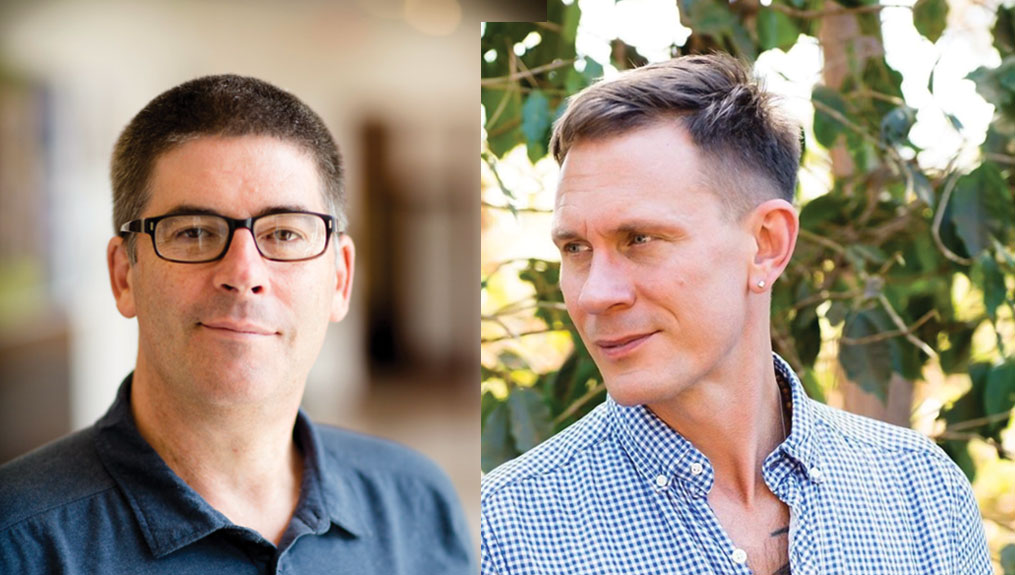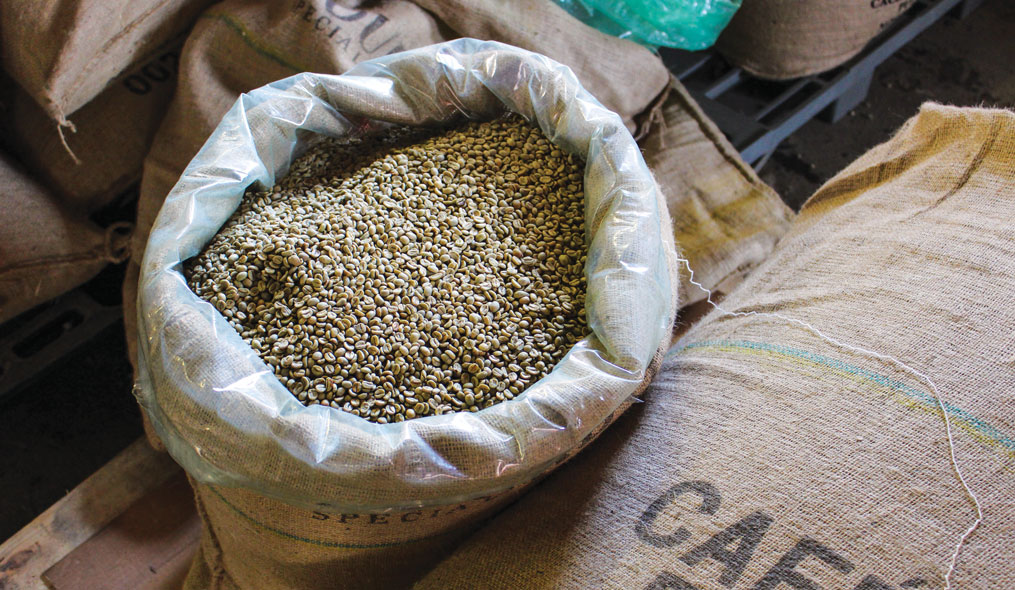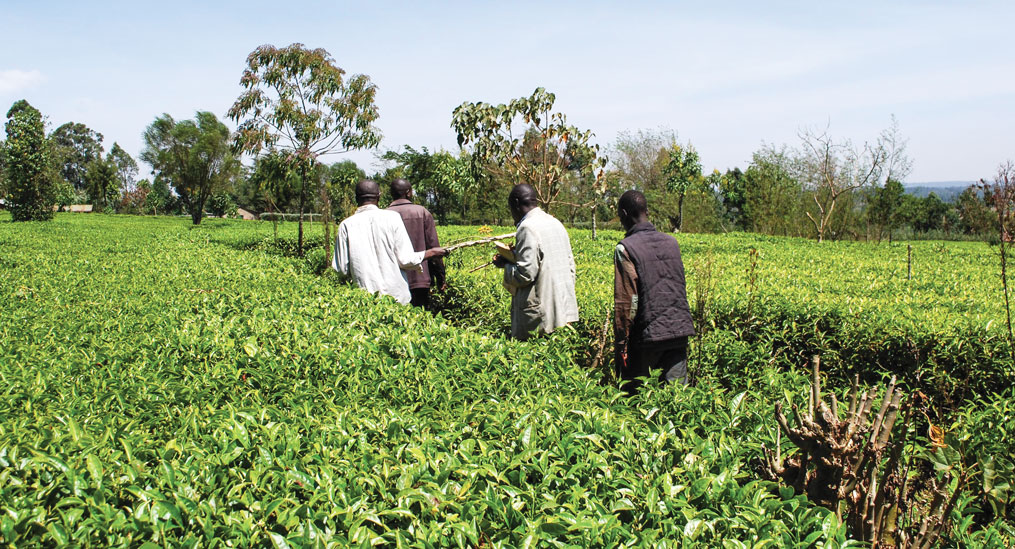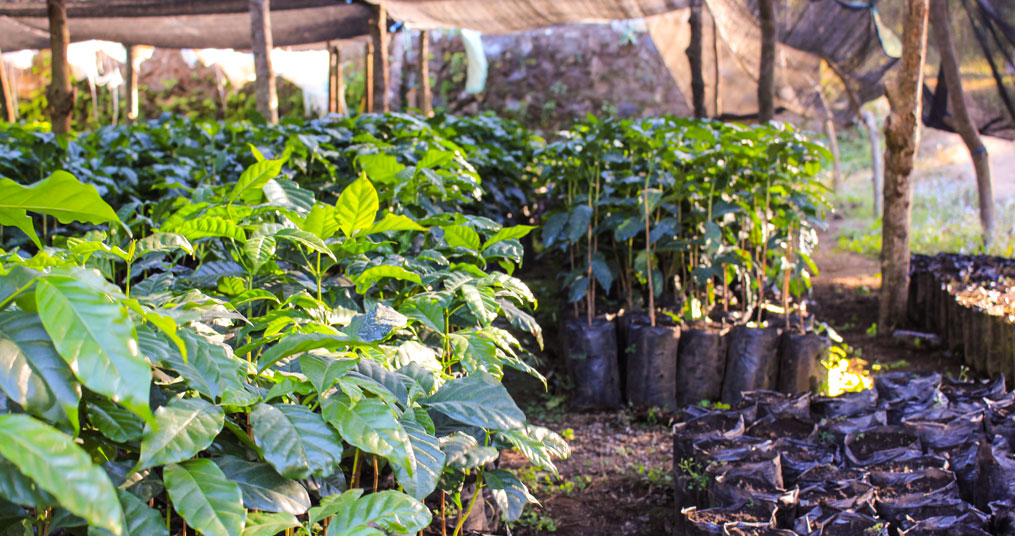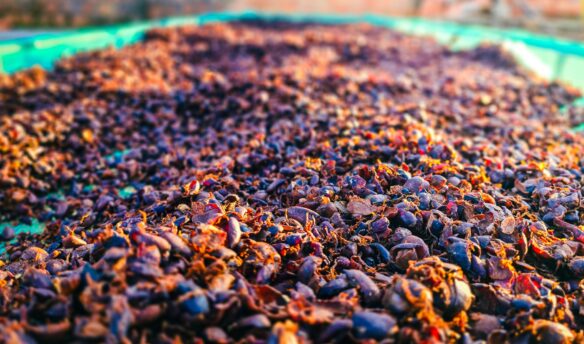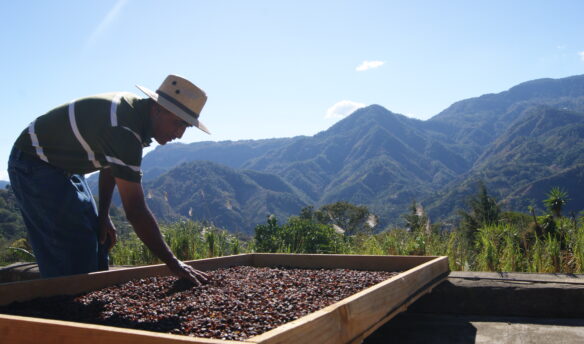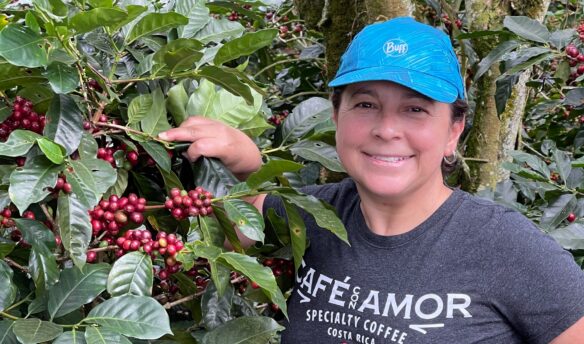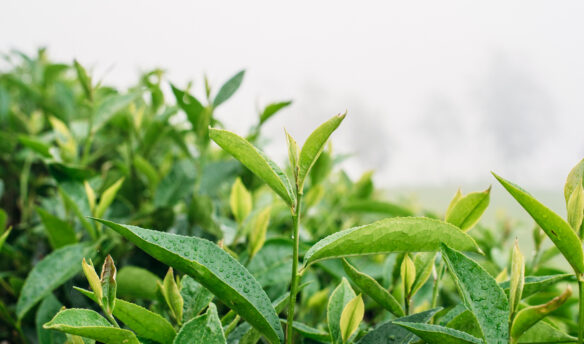Peter W. Roberts (left) and Chad Trewick.
[I]t should come as no surprise that the future of specialty coffee is uncertain, one of the largest threats being the cost of production. After the C market price of coffee dropped below $1.00 USD/lb. last August—the lowest in 12 years—the industry woke up to the fact that if coffee producers continue to suffer from low-revenue farming operations, the supply chain cannot sustain the ever-increasing demand for specialty coffee. In response, the Specialty Coffee Association launched its Coffee Price Crisis Response Initiative in December to understand and address long-term cyclical pricing decline.
First-of-its-kind research is also being conducted: The Specialty Coffee Transaction Guide is a pilot collaboration between researchers at Transparent Trade Coffee (TTC), housed at Emory University, and an expanding roster of data donors—producers, exporters, importers, roasters, and other support organizations—who provide detailed contract data covering specialty coffee transactions from recent harvests. Using this anonymized data, the Guide serves as a report on the distributions of recent Free on Board (FOB) prices—prices paid for coffees delivered and placed onto the ship at their port of origin—for green specialty coffees.
Since releasing their initial findings in December, project leaders Chad Trewick, of Reciprocafé, LLC, and Peter W. Roberts, professor of organization and management at Emory and academic director of Social Enterprise at Goizueta, have seen a surge of interest and praise from the community.
“[The Guide] has been met with such great excitement and enthusiasm and willingness to collaborate and contribute,” says Trewick. “We feel that immediately this resonated with people in a way that I think exceeded our expectations.”
Trewick and Roberts recently took the time to speak to Fresh Cup before they traveled to Guatemala for a workshop with stakeholders there to further their work at origin.
This interview has been edited for clarity.
Let’s chat about how this whole project got started.
Chad Trewick: To give you a sense of how this started, my background in the industry is for 20 years I was the ‘Coffee Guy’ in charge of coffee at Caribou Coffee. Throughout that role, it evolved, but for the last 10 years the biggest priority for me was transforming our 25-million-pound supply to Rainforest Alliance certification as a way not only of introducing some ethical and environmentally prioritizing practices, but also as a way to be able to pay a premium.
Every year I would travel to these communities and I would see that while I was fine, and my salary was up, and my hotel cost more and my plane ticket cost more, I was paying the same amount or less for coffee….I started to see how these behaviors that I personally was remunerated for were having this impact in the communities that we depended on. Once I saw it, I couldn’t unsee it.
I was [a facilitator for a panel discussion relating to the cost of production] at SCA Expo in 2017, and one of the gentlemen who was working on the Transparent Trade Coffee project, which is also housed at Emory University, came up to me afterwards and said, ‘I think you should look at this project we’re doing.’
I looked at it—what they have is a system where brands donate information related to their green coffee price paid and their retail price in the store. TTC then reports what percentage of their retail price stayed in the country where coffee was produced, an RTO (return to origin) percentage. I thought, ‘Wow, this is really a cool thing, I love that these brands are proudly and happily volunteering this information.’ But I started to think, ‘I want more, I want this to be bigger, I want this to be broader. I want to represent a bigger part of our industry.’
And so I approached Peter and said, ‘What if we started to talk about people being able to donate anonymously so that their data would be aggregated and anonymized in a way that nobody would be able to see whose was whose?’ We would have to follow good research protocols, statistically valid rules about how many people can be onboarded at once, for example, so that no one player influences the Guide over another.
It became a safer platform for people to donate the data to, so that we could then create this Guide. And I think because of my industry contacts and relationships and the ability that I have to go to these brands and say,[clickandtweet handle=”” hashtag=”” related=”” layout=”” position=””] ‘Hey, there’s this cool project, the outcome is going to be a guide that should be an alternative to the commodity market price reference that we all hate using, let’s figure this out.’[/clickandtweet]
Peter Roberts: It’s important to signal the catalyzing role that Chad played. For a while there, when people were looking at the Transparency Trade Coffee, we were sort of chipping away, pulling out information where we could, and we always wanted it to go faster. There was always this piece of, ‘How could we get more and better information?’
I used to say, ‘Wouldn’t it be cool if you got the importers to give the data—but who would?’ It was that early conversation with Chad, he said, ‘I don’t know Peter, there’s a different logic here’— folks working the channels had similar concerns about the lack of robust market foundation. Concern was growing about the coffees you wanted to buy were going to disappear because we don’t know how to pay for what they’re worth.
When we launched, I was still skeptical [until I realized] there was a swath of players in the market that are prepared to get at and prepared to do something about it. I still think the work that we do on the TTC side—putting prices out in front of customers and making that visible—was extremely important. But it’s like we just revealed a little more of the iceberg—and there’s lots of work to do.
Why do you think the Guide has seen such a positive reception?
CT: One of the things that’s really important about the Guide is that it’s providing information about prices not just to buyers of coffee but, very, very importantly, it’s providing pricing information to sellers of coffee who, until today, have generally been kept in the dark about how and why certain coffees are worth whatever they’re worth.
What we’ve really found interesting, in fact, during the first week that the pilot was out there, more than half of our downloads were from the countries where coffee is grown. We immediately knew not only were we creating a tool that was resonant with the market that needed some kind of pricing alternative, but with the people who were producing coffee in the countries where it’s grown to say, ‘Well, let’s figure out how much this stuff can be worth to us.’ It’s all about elevating information, providing information, and its intention is to inspire further questions, further research curiosities, further insights.
One thing we did before we really launched the guide is we got feedback from stakeholders in [producing countries]. The idea really is to say, ‘We don’t want to be creating a tool that has any unintended negative consequences that we haven’t thought about, so please, what might they be, what do we need to make this thing better for you as producers?’
For example, out of one of those meetings, I think it was the Colombia one, the producers in the room said, ‘Well, I can tell you right now you’re going to have to explain to us what the heck someone can do to coffee from the time it gets from our farm to an FOB price, because that price is so different from what we’re getting at the farm.’
And so right there you can see how it provides the opportunity for another research project, another thing for us to share information regarding pricing or value added by different actors in the value chain, that doesn’t exist now….There’s a whole lot of opportunity for other research questions to be asked.
Are you expanding your research into more countries, like Asia and Africa?
CT: One of the priorities we have is to ensure greater geographical representation globally, not only of coffee producing countries but of coffee consuming countries. So for consuming countries, we’re really trying to get some data from Australia, New Zealand, Asia. For producing, I think there’s no data about Asia countries in the guide right now, there’s very little data about Africa.
We are definitely intentionally recruiting data to make the tool more robust in that sense, because we want it to be valid and relevant for not just United States buyers of Central America and South America coffee. It’s really important to us that this becomes an internationally relevant tool, and it’s also providing greater insights to, if you’re a coffee selling country, which regions of the world pay the best price? We’re really looking to round out geographical representativeness of the guide with this next round of data donors.
In the recent SCA webinar [on the coffee price crisis], Ric Rhinehart heavily emphasized that this is academic work and research, and Chad you spoke about your gratitude toward Peter, though an ‘outsider’ in the industry, his work is helping illuminate industry behaviors and opportunities. Is such work rare in the specialty coffee industry? Should other industries adopt similar research and practices?
CT: [I think it’s important to talk about] why don’t we see more of these academic and industry collaborations, so that someone from the outside can look objectively and from an educated perspective and start to contribute to a conversation to evolve. Because to me, I think that’s what’s happening here, and I think it’s really been powerful, from my perspective.
PR: From an academic perspective…people don’t write about coffee. They just don’t. We looked at [50 top academic business journals over the past 20 years], I don’t know the exact number, but let’s assume that’s 40 thousand publications. I think the number of them that had the word ‘coffee’ in the title or the abstract was 20….[There’s] just so little out there in terms of, it’s the fourth-ish most valuable commodity traded on Earth, it literally proliferates on the consuming side, it’s implicated in poverty around the world, [but] it’s not a sector that produced a lot of economic data.
I spent 15 years studying various aspects of the wine industry, but the nice thing about that is you take something like the [Wine] Spectator or someone like [wine critic] Robert Parker, you can get price and quality information and do some work on that.
Coffee, especially on the sale side, down at origin, it just has zero attention. I don’t think it’s exactly straight cause-and-effect, but I think that’s one of the reasons why you just don’t see a whole lot of updating. Listening to Ric talk about the problem as, ‘Green coffee prices were imprinted on the confluence of colonialism and slavery,’ which means land and labor get nothing. That’s technically deep history. But then you just really haven’t had a well-functioning market that has updated those things.
Right now [in] specialty coffee is like what happened in the New World of wine back in the ‘70s, when Mondavi came on board….Now all the Napas and the Sonomas and the Willamettes and the Malbecs from Argentina, all that kind of stuff has come up in the last 30 or 40 years, and parts of that market update.
Coffee has had this explosion of this kind of notion, ‘I should be able to pay you where land and labor aren’t appropriately compensated.’ I honestly believe more academics, particularly business school academics, should look at it….It’s just really hard to do quantitative analysis when there’s no data.
Not that people don’t study coffee, they do, but they study coffee like it’s a locus of poverty, so anthropologists and economic development folks spend a lot of time talking about addressing and alleviating poverty in coffee countries. But you need that other kind of business econ people who are going to say what’s going on in terms of what’s driving better versus worse prices, and who is and is not making money. Hopefully we can stimulate that kind of work over the next four or five years as well.
The specialty coffee industry has been aware of the coffee price crisis for a while. Why are we just now taking this action and seeing this research come to light?
CT: I think that in August we reached this psychological level of ‘sub-one dollar on the commodities market,’ and I think that while many of us know and understand very, very deeply that the coffee commodity price has been below the cost to produce for a long time, this below-a-dollar level is really something that resonated with people and got them to understand how, wow, okay we have to have a different and serious conversation now. This isn’t fixing itself, it’s not getting better. In fact, it’s getting worse. In 2017, a conversation was started by the World Coffee Producers Forum group in Medellín, Colombia, where they all got together and were like, ‘Alright, we’re done for here, our countries are struggling, and suffering, and yours aren’t, so what’s the deal?’
So [the International Coffee Organization] started trying to react, by being a part of the World Coffee Producers Forum, investigating a little more about the cost to produce and farmgate prices being received, and so the conversation just started to seep more into a broader cross-section of the industries. And then the price got below a dollar and the specialty coffee industry said, ‘Alright, enough! Our own ability to exist is jeopardized by this sort of hands-off free market approach that people are taking.’
That’s really, I think, the point at which SCA decided to have a different conversation and lead that conversation, and have it be about industry preservation and finding alternative price discovery tools, like the Guide, to serve the industry. The timing of all these horrible things sort of happened at once, and gave us the opportunity to get the attention that we wouldn’t have otherwise.
Fresh Cup continues the conversation with Trewick and Roberts, including what’s next for the Guide, in our May issue.
For more information about the Specialty Coffee Transaction Guide, and to download a free copy, visit www.transactionguide.coffee.
To watch SCA’s “Coffee Price Crisis Webinar: Spotlight on the Specialty Coffee Transaction Guide” (available in both English and Spanish), visit www.scanews.coffee.



